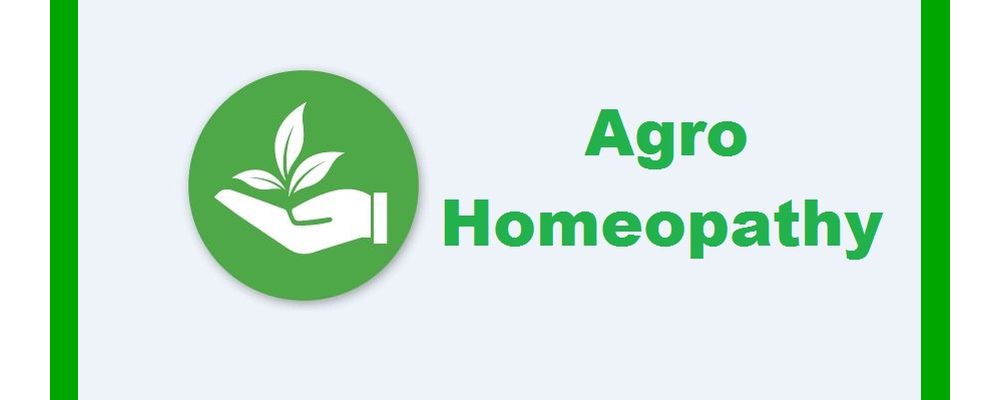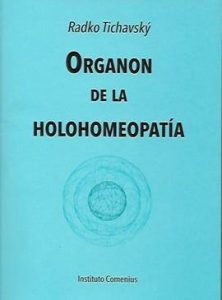RadkoTichavsky is a Czech born Mexican Agrohomeopath. He is a co-founder and director of Instituto Comenius in Mexico and author of Handbook of Agrohomeopathy, 2007 (Spanish) and Homeopathy for Plants, 2009 (Spanish) and creator and teacher of Holohomeopathy.
Agrohomeopathy Course!
RadkoTichavsky is now offering a one semester virtual course in Agro homeopathy (in English). You can learn how to define and analyze holons and how to repertorize the specific homeopathic treatment beyond just disease or pest names. You can find out more here: www.icomenius.edu.mxNEW BOOK:
Organon de la Holohomeopatía – Six years in the making, it is the latest book by RadkoTichavsky, researcher on the application of homeopathy in agriculture. This Spanish language book covers homeopathic interventions in agriculture from the holistic view, allowing greater certainty in repertorizations. It addresses a novel concept of metabolic similarity, not only among plants, but also among different species of the animal and plant kingdom.It studies the formation and dynamics of attractors, areas of greater vitality within the holons and coexistence units of different living organisms. Holohomeopathy is a fascinating contribution to the application of homeopathy to plants. It allows one to discover a universe of surprising relations in vital dynamism. It puts into the hands of the agricultural producer a valuable tool for the successful handling of pests and diseases in crops of any size. For ordering or information: [email protected]
Dear Mr. Tichavsky,
I would like to ask a question about controlling slugs in the garden. What am I doing wrong, as the remedy Helix tosta doesn’t seem to work. My garden is in Charing – East Kent, UK. TN27 OJHThank you
Grace DaSilva-Hill
RadkoTichavsky:
Dear Grace,
Helix tosta has limitations in its use.Its operation is temporary and must be applied in the potency 6 CH or lower to make a medium effect. The operation is based on the logic of nature that considers burned bodies of slugs as a consequence of fire, and this is why slugs avoid the place. But this has its due limits.
We have to understand the role of slugs in nature.They are big bioaccumulators of heavy metals and also the big chelators of them.They are bioindicators and bioaccumulators of heavy metals (V, Mo, Ni, Se, Ti, Rb, Sr and Ba ), radionuclides and pesticides or trace heavy metals from chemical fertilizers in the soil.Then there is soil and consequently the plants have accumulation of heavy metals. If this condition is combined with moist conditions, the ideal conditions and perfect invitation of the slug from the holon is made.
The first concern should then be to decontaminate the soil by means of chelators: Opuntia ficus-idica 6 CH or Plantago ovata 6 CH or Aloe vera 6 CH. The selection of the chelator will depend on the crops in question andfor each crop we have to apply a chelator that has a metabolic similarity to it.The list of slug remedies is much larger than Helix tosta, and as I mentioned, it depends on the metabolic similarity to the culture and the type of slug in question. For example: Aesculus hippocastanum, Anacardiumoccidentalis, Angelica archangelica, Argemonemexicana (from the TM made from the roots of the plant), Azadirachtaindica, Canna edulis, Chelidoniummajus, Cuminumcyminum, Ficuscarica (from the TM produced from the leaves), Ginkgo biloba, Jatropha curcas, Larrea tridentate, Lupinusalbus (from of the TM made from the seeds of the plant), Nerium oleander, Origanum vulgare, Parthenium hysterophorus, Primula elatior, Ricinus communis, Sanguinariacanadiensis, Sapindussaponaria, Saponaria officinalis, Schinnusterbenthifoliua (from the TM made from the resin of the tree ), Solanum nigrum, Tabebuyarosea, Thymus vulgaris and others. Selected remedies have to be applied during the summer and autumn with Opuntia ficus-indica sap, Aloe vera or Kalanchoe pinnate as an adjuvant in the low potency 6 CH.
Dear Mr. Tichavsky,
I am doing banana farming in my home town of Thoothukudi, District of Tamilnadu, India. Nearby our farm we have another lot one acre. We are unable to use the land because of the salt content in the soils. Is there some way to change the soil through homeopathy or other methods?The climate is tropical except during November and December. Also, is there any homoeopathic way of farming banana without using pesticides?
Thank you
P.S.Sivagnanam
RadkoTichavsky:
Hello Mr. Sigvagnam,
In case of high content of salt in soil, it is very important to maintain good soil drainage (for example by adding sand), good watering to wash the content of salts in the soil and also a high content of organic matter in the soil, that the humic and fulvic acids have a chelating power and keep the salt inactive in the soil. As for homeopathic remedies, we use Natrum muriaticum 30 CH in irrigation, also Larreatridentata 12 CH, Opuntia ficusindica 6 CH (made from sap) Cocos nucifera 6 CH, which has 102 common metabolites with banana (made from coconut water) and Daucus carota 6 CH, a plant that has 134 common metabolites with plantain (it is made from the root tincture and seeds of the carrot).
There have been many positive experiences with the application of homeopathy in bananas, for example to control Black Sigatoka, a fungus Mycosphaerellafijiensis Morelet that represents the most serious affection in the world, and it can be controlled well with applications of Arsenicum album 12 CH. It is only a matter of starting to experiment a little with the remedies that I mention to achieve an ecological and agrochemical-free production.
Dear Mr.Tichavsky,
Thank you for your reply in the December edition to my further enquires about treating my grevillea tree for tree borer. As I have seen no improvement in the condition of my tree after using a remedy made from crushed seed pods, I will again try to obtain the resin from a Sheoak. We are now experiencing humid weather here, and will attempt your suggestion to cause a small wound to hopefully stimulate resin.
In the meantime, I have been far more successful in locating resin from a Hoop Pine (Araucaria cunninghamii), another of the 3 species you recommended that I could use. When I found it on the particular specimen the ‘whitish’ resin had conveniently trickled down the trunk, & the consistency was like very stiff toffee that was easily removed & is now soaking in Vodka. I wish the Sheoak’s resin was as easy to obtain!
I will assume that the instructions for making the remedy from Hoop Pine resin will be the same as that for the Sheoak, but if not I would appreciate any correction you might offer.
How often and how long should I apply the remedy for this persistent tree borer?
Thank you,
Rhonda
Radko TIchavsky:
Hi Rhonda,
I am glad you are looking for resources in your holon, little by little you will realize that everything you need is around you, the health of trees is not often found in pharmacies or agrotoxic stores but in nature itself.The application time and the effectiveness of the application of Hoop Pine (Araucaria cunninghamii) depends on the degree of involvement of the trees and the vitality of them. Weakened and dehydrated trees are generally chosen by the tree borer, not because they would be the evil insects, but because the weakened tree itself emits biochemical signals and changes in the infrared spectrum that actively attract them.
Dear Mr. Tichavsky,
I have a young pear tree that gets blight. Orange spots appear on the leaves and as the season progresses it looks as if roots are growing from the orange spots on the underneath. I live in Surrey, UK. The tree is planted in chalky soil that is poor for nutrients. Last year of course was very hot and dry, although I did water the tree frequently, but the soil drains very quickly.
Kind regards Liz
Liz Angell
Radko Tichavsky:
Dear Ms. Angell,
The description seems to be of basiodiomycota fungi of the Puccinialesorder. The first recommendation is to acquire only mycorrized trees, that is trees inoculated with beneficial fungi that eliminate the possibility that other pathogenic fungi take over the plants. The second recommendation refers to the soil that must have good content of organic material and above all good drainage.Fallen leaves from this tree have to be composted at least six months before being incorporated in the form of mature compost under the tree.As for homeopathy, in this case one should apply a soil bionosode 6 CH with Opuntia ficusindica as an adjuvant, sprayed on the tree.The application of Selenium 6 CH in the irrigation water will help to better develop the roots of the tree. Although Allium cepa 12 CH (has 81 common metabolites with Pyrus communis) is the specific remedies that helps control fungal outbreaks, it is generally used only in foliar application, so as not to damage mycorrhizal fungi (if they have been previously inoculated in the tree.)
Hello Mr. Tichavsky,
We have a small garden and have planted show plants in earthen pots. They grew very well in the first few weeks, then slowly started to shrink and now some are totally dead. We watered them daily and they got sunlight, however I noticed black fungus spots on them and the leaves looked damaged. Can you suggest how homeopathy could help?
Regards,
Dr Dnyanada Ghanekar
Radko Tichavsky:
Dear Dr. Ghanekar,
Fungus requires moisture, darkness and poorly drained soil.As a preventive measure you have to add river sand in the pots, as well as well-ripe compost and control well the irrigation. It would be necessary to know what type of plants you have, to be able to issue a specific recommendation.But, in general, it can be said that there are four basic homeopathic mineral remedies with the antifungal power: Sulfur, Silicea, Cuprum metallicum and Zincum metallicum.Sulfur and Silicea are antidoted, so Cuprum and Zincum are antidoted, so they can’t be applied together. The homeopathic potencies of these remedies can be applied between in potencies of 6 and 12 CH.






Dear Mr. Tichavsky, I’m writing with a full heart and opened mind in response to your discussion with Grace DaSilva-Hill about slugs. We are in Edmonton Canada, and have had an enormous issue with slugs in our garden for now the fourth season. I discovered Agrohomeopathy last fall after an unusually wet season here brought an onslaught of the to many gardeners in the province. I knew the the incredible number of eggs would over-winter comfortably under the snow, and have seen an uncountable number of the babies this spring. Contrary to Grace’s experience, I have witnessed an astonishing difference after just one week using Helix Tosta (3 treatments). I’m impressed beyond words now as I’ve discovered your discussion with her that reveals to me the possible underlying cause of their appearance, as the property we live on has been treated for about 40 years before us with synthetic fertilizers and pesticides/ herbicides by the previous owners.
We’ve been here 4years now and have used permaculture/ no-dig methods, keeping the soil covered and encouraging diversity as much as possible to heal the space the best we can – thus creating a lovely space for slugs and for their natural predators. We’re so happy to share what grows with all species and do have many hungry pests, the slugs being particularly beyond any control. I did expect this year to be the tipping point and the information that you provided has completely changed and opened my expectation in that regard.
I’m blessed to know 2 homeopathic Doctors that are also interested in the agro-perspective, and will try and find the 3 remedies and suggestions you made for Grace to treat the soil, and I’m so grateful and touched to find you sharing this. I’d love to find more information in English – would you have other recommendations?
I’d like like to know if you might have suggestions on how to view and treat invasive plant species.
Much of our city is overrun with Campanula rapunculoides or Creeping Bell Flower – it’s been taking over north America, and is terribly difficult to deal with. I’m planning to capture a plant with root to toast, and make a remedy with a practicioner friend ~ wonder if some insight comes to mind for you.
My thanks to you sir, for the profound insight your information has provided me. I’m so grateful for the help and am happily sharing with other gardener friends.
Respectfully, Lyn and Simon Hirthe